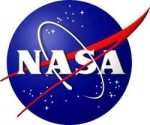Wed, Nov 10, 2010
Goal Is To Evaluate Potential New Systems, Concepts, And
Technologies
 NASA has selected 13 companies for negotiations leading to
potential contract awards to conduct systems analysis and trade
studies for evaluating heavy-lift launch vehicle system concepts,
propulsion technologies, and affordability.
NASA has selected 13 companies for negotiations leading to
potential contract awards to conduct systems analysis and trade
studies for evaluating heavy-lift launch vehicle system concepts,
propulsion technologies, and affordability.
The awards total approximately $7.5 million with a maximum
individual contract award of $625,000. Each company will provide a
final report to help lay the groundwork for the transportation
system that could launch humans to multiple destinations, including
asteroids, Lagrange points, the moon and Mars.
The selected companies are:
- Aerojet General Corp., Rancho Cordova, CA.
- Analytical Mechanics Associates, Huntsville, AL.
- Andrews Space, Tukwila, WA.
- Alliant Techsystems, Huntsville, AL.
- The Boeing Co., Huntsville, AL.
- Lockheed Martin Corp., Huntsville, AL.
- Northrop Grumman Systems Corp., Huntsville, AL.
- Orbital Sciences Corp., Chandler, AZ.
- Pratt & Whitney Rocketdyne, Canoga Park, CA.
- Science Applications International Corp., Huntsville, AL.
- Space Exploration Technologies Corp., Hawthorne, CA.
- United Launch Alliance, Centennial, CO.
- United Space Alliance, Huntsville, AL.
"These trade studies will provide a look at innovative launch
vehicle concepts, propulsion technologies, and processes that
should make human exploration missions more affordable," said Doug
Cooke, associate administrator of NASA's Exploration Systems
Mission Directorate at the agency's Headquarters in Washington. "If
we are to travel beyond low-Earth orbit, industry's collaboration
is essential to reduce the cost associated with our future
exploration goals and approaches and make the heavy-lift vehicle
affordable to build and fly."
The studies will include heritage systems from shuttle and Ares,
as well as alternative architectures and identify propulsion
technology gaps including main propulsion elements, propellant
tanks and rocket health management systems. The reports will
include assessments of various heavy-lift launch vehicle and
in-space vehicle that use different propulsion combinations. The
companies will examine how these combinations can be employed to
meet multiple mission objectives.
NASA will use the recommendations to evaluate heavy-lift launch
vehicle concepts and propulsion technologies for affordability that
will be required to enable robust and sustainable future
exploration missions.
More News
Also: New Lakeland Fly-in!, Gleim's DPE, MOSAIC! Nearly three-quarters of a century in the making, EAA is excited about the future… especially with the potential of a MOSAIC>[...]
Estimated (EST) -When used in NOTAMs “EST” is a contraction that is used by the issuing authority only when the condition is expected to return to service prior to the >[...]
Aero Linx: Regional Airline Association (RAA) Regional airlines provide critical links connecting communities throughout North America to the national and international air transpo>[...]
The Airplane Broke Up In Flight And Descended To The Ground. The Debris Path Extended For About 1,435 Ft. Analysis: The pilot, who was the owner and builder of the experimental, am>[...]
From 2015 (YouTube version): History Comes Alive Thanks to A Magnificent CAF Effort The story of the Douglas C-47 named, “That’s all Brother,” is fascinating from>[...]
 Airborne 07.21.25: Nighthawk!, Hartzell Expands, Deltahawk 350HP!
Airborne 07.21.25: Nighthawk!, Hartzell Expands, Deltahawk 350HP! ANN's Daily Aero-Term (07.27.25): Estimated (EST)
ANN's Daily Aero-Term (07.27.25): Estimated (EST) ANN's Daily Aero-Linx (07.27.25)
ANN's Daily Aero-Linx (07.27.25) NTSB Final Report: Luce Buttercup
NTSB Final Report: Luce Buttercup Classic Aero-TV: 'That's All Brother'-Restoring a True Piece of Military History
Classic Aero-TV: 'That's All Brother'-Restoring a True Piece of Military History



